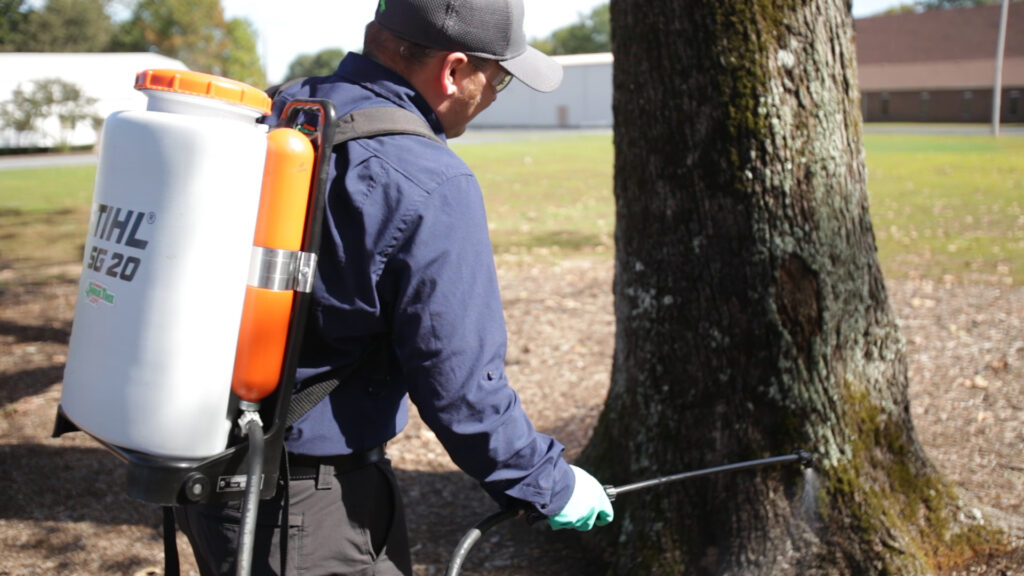Shrub and Tree Care knows firsthand how destructive root rot can be. This soil-borne disease invades and kills a tree’s root system, making it impossible to take up water and nutrients. If left untreated, root rot will eventually kill the tree.
To help you better understand how we tackle this serious problem, our experts are here to share a brief breakdown of the root rot treatment for trees.

Symptoms
Do you suspect your tree might have root rot? There are several symptoms to look out for, including:
- Discolored or dying leaves
- Branches dieback
- Cracks in the trunk
- Cankers
- Poor tree growth
- Stress crops (or abundance in fruits and seeds)
- Fungal fruiting bodies near the tree
Schedule an Easley tree service by Schneider Shrub and Tree Care when you notice the warning signs of root rot. The sooner you act, the better the chances of saving your tree.
Diagnosis
Root rot can stem from different culprits, including fungi, bacteria, and even certain types of insects. That’s why an accurate diagnosis is critical to determining the best course of action.
Some of the most common pathogens that cause root rot diseases include:
- Rosellinia necatrix. Rosellinia is a wood-rotting fungus that often enters a tree through wounds in the roots or trunk.
- Rhizoctonia. Rhizoctonia is a soil-borne fungus that mostly affects younger trees.
- Phytophthora cinnamomi. Phytophthora is a prolific water mold that thrives in wet or poorly drained soils.
- Fusarium. Fusarium is another fungus that can cause root rot, especially in stressed trees suffering from other factors like drought or compacted soil.
Once pinpoint the culprit, we can start developing a root rot treatment for trees.
Treatment
The first step in treating root rot is to improve drainage around the infected tree. If the tree is in compacted soil, we aerate the soil or install a drainage system.
We might also need to remove the severely infected root. This process, called root pruning, involves carefully cutting away the diseased parts while leaving healthy ones intact.
Then, we begin applying fungicides, bactericides, or other treatments, depending on the pathogen causing the root rot. For severe cases, we may have to remove the tree entirely to prevent the root rot from spreading to other trees.
Prevention
The best way to avoid needing root rot treatment for trees is to take preventive measures. When planting a new tree, choose a species that’s highly resistant to the pathogens found in your area.
We also recommend following proper watering practices. Water your trees deeply and infrequently to encourage deep, strong roots. Seasonal pruning and fertilization can also improve the tree’s natural resistance to diseases.
Invest in Professional Maintenance
Root rot treatment for trees is a long, costly process that serves only as a last resort. If you want to keep your flora thriving all year round, we recommend joining the Shrub and Tree Care program.
Our experts will work with you to develop a plan that fits your specific needs, from insect control to nutrient application. Get in touch with us today and learn why you would need a care program for your living landscape.



